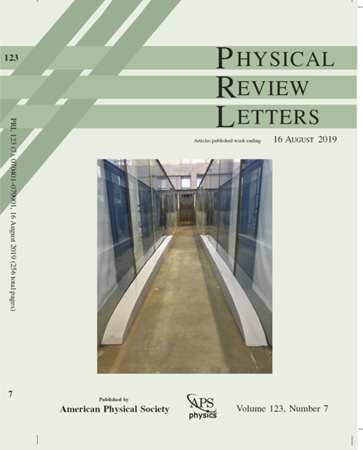论文:建造μ子对撞机的路径
IF 9
1区 物理与天体物理
Q1 PHYSICS, MULTIDISCIPLINARY
引用次数: 0
摘要
μ子是基本粒子,与质子等复合粒子相比,它提供了更清洁的碰撞事件,可以探索更高的能量。μ子也比它们的电子表亲重得多,这意味着它们发射的同步辐射更少,而同步辐射有效地限制了圆形正电子对撞机的能量。这些特征为μ子对撞机超越大型强子对撞机的直接能量范围提供了可能性,同时实现了对标准模型过程的前所未有的精确测量。在这篇文章中,在简要总结了迄今为止取得的进展之后,我指出了重要的缺失的研究和开发步骤,并设想了一个令人信服的计划,在未来20年内将介子对撞机变为现实。一个介子对撞机可以让我们探索当前技术无法实现的物理。例如,它可能提供一种直接研究希格斯玻色子或探测新粒子的方法,包括那些与暗物质或其他超出标准模型的现象有关的粒子本文章由计算机程序翻译,如有差异,请以英文原文为准。
Essay: A Path for the Construction of a Muon Collider
Muons are elementary particles and provide cleaner collision events that can explore higher energies compared to composite particles like protons. Muons are also far heavier than their electron cousins, meaning that they emit less synchrotron radiation that effectively limits the energies of circular electron-positron colliders. These characteristics open up the possibility for a muon collider to surpass the direct energy reach of the Large Hadron Collider while achieving unprecedented precision measurements of standard model processes. In this Essay, after briefly summarizing the progress achieved so far, I identify important missing research and development steps and envision a compelling plan to bring a muon collider to reality in the next two decades. A muon collider could allow for the exploration of physics that is not available with current technologies. For example, it may provide a way to study the Higgs boson directly or probe new particles, including those related to dark matter or other phenomena beyond the standard model. .Published by the American Physical Society 2025
求助全文
通过发布文献求助,成功后即可免费获取论文全文。
去求助
来源期刊

Physical review letters
物理-物理:综合
CiteScore
16.50
自引率
7.00%
发文量
2673
审稿时长
2.2 months
期刊介绍:
Physical review letters(PRL)covers the full range of applied, fundamental, and interdisciplinary physics research topics:
General physics, including statistical and quantum mechanics and quantum information
Gravitation, astrophysics, and cosmology
Elementary particles and fields
Nuclear physics
Atomic, molecular, and optical physics
Nonlinear dynamics, fluid dynamics, and classical optics
Plasma and beam physics
Condensed matter and materials physics
Polymers, soft matter, biological, climate and interdisciplinary physics, including networks
 求助内容:
求助内容: 应助结果提醒方式:
应助结果提醒方式:


